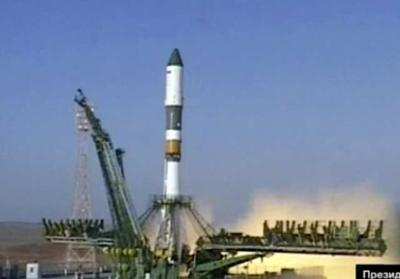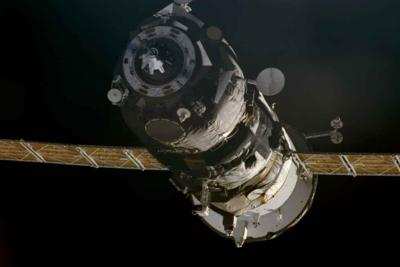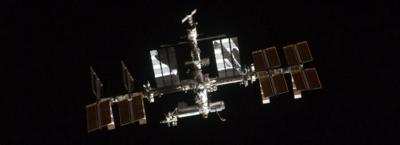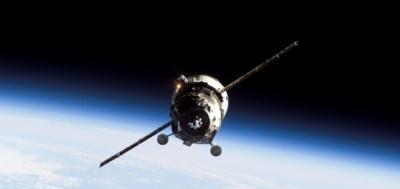Hanging By The Single, Weak Thread That Is The Russian
Soyuz
By ANN Special Correspondent Wes Oleszewski
At 9:00 EDT on the morning of Wednesday, August 24, 2011 the
Progress M-12M vehicle lifted off from Baikonur Cosmodrome in
Kazakhstan on an unmanned supply mission to the International Space
Station (ISS). Boosted atop the Soyuz version of the basic R-7
rocket that has been flying from Baikonur since the late 1950s and
has lofted such spacecraft as Sputnik, Vostok and most recently the
manned Soyuz, the launch looked good- at least for the visible
portions.

Once the booster shed its strap-ons and core stage, the
“third stage” went to work and shortly thereafter
commanded an engine shut-down due to “…an engine
anomaly.” At that point the vehicle did not have the velocity
needed to make any sort of orbit and it returned to earth in a
ballistic arc. It impacted in a reportedly heavily wooded and
remote part of the Altai Republic. Russian news outlets report that
the resulting impact event rattled glass 100 Km away.
This event is very important because of a large number of
extending factors most of which are rooted in the fact that,
currently, with the Space Shuttle program ended, the only means of
sending crews to the ISS is by way of the same basic booster that
just failed. Plus the most heavily scheduled way for taking cargo
and fuel to the ISS is by way of the Soyuz launch system. Russian
Proton launch vehicles can be used, but the failure of a spacecraft
to separate from the Proton last week has now grounded that launch
vehicle. Reliance for ISS support was riding on the Soyuz launch
system that, immediately following the Space Shuttle’s final
flight, the Russians openly boasted as being so reliable that they
welcomed the world to the “…Era of
Soyuz…” In fact, the United States, by way of NASA is
now dependent on the Soyuz system to not only send astronauts to
the ISS, but to supply the station until an undefined date when
selected “commercial” companies may be able to take
over the job. That decision now leaves the ISS, a $100 billion
asset, paid for largely with American tax dollars, without a
redundant support system.

Aboard the Progress M-12M was 2,700 pounds of dry supply goods,
925 pounds of water, 110 pounds of oxygen and 2,049 pounds of
propellant. The most critical part of the payload being the
propellant which was scheduled for transfer to the ISS’s
Zvezda service module. That, along with the M-12M’s own fuel
and engines would have been used to “re-boost” the ISS
on three different occasions- August 31, September 14 and October
19. Such re-boosts are required because the ISS is in an orbit
where the forces of the earth still are able to impose tiny amounts
of friction upon the football field sized space station causing its
orbit to begin to degrade. Thus occasional re-boost firings are
required to prevent the orbit from decaying. Now the M-12M Progress
and the fuel it carried are simply gone. This does not mean that
the station is in immediate danger of falling to earth. NASA
reports that the engines on the Zvezda service module can be used
for the re-boosts if needed. Those engines, however, are normally
preserved- because each burn causes some degradation in the engine
bells and with the Space Shuttle being gone, there is no way to
replace that hardware. There was a suggestion that the Progress
M-11M, that has been docked at the ISS since June, could be called
upon to do the re-boosts. Unfortunately, the M-11M Progress was
undocked and positioned for de-orbit in order to make room for the
Progress M-12M which is now a smoldering crater in the Altai
Republic. Thus the M-11M Progress is probably not capable of
re-rendezvous and re-boost duty. ATV supply ships can do some of
the resupply, the next one being due in early March of 2012, but
cannot do the re-boost duties.
Other consumables aboard the ISS can last about a year without
resupply flights and the only large issue is likely to be refuse
disposal. Each Progress not only brings up tons of supplies, but
also carries away tons of refuse which subsequently burn up as the
Progress de-orbits into the upper atmosphere. There are, in fact,
very few places on ISS to stow trash and so items of refuse can
quickly pile up. Next to re-boost, the greatest limitation on an
un-resupplied ISS crew is said by NASA to be the “potty
materials.”

Crew rotation on the ISS depends completely on the Soyuz launch
system. The Progress M-12M cargo vehicle was boosted by a Soyuz-U
booster while the manned version is sent into orbit on the Soyuz-FG
booster. Both launch vehicles use similar third stages and thus a
major failure of that stage such as took place on the M-12M mission
will likely cause all of those boosters to be halted until the
cause is found. Of course the crews that are currently working
aboard the ISS are not stranded. Since the issue is in the booster
and not in the Soyuz reentry module, the crews can return to the
earth.
With this failure following so closely the Proton
vehicle’s failure and in light of two recent ballistic, but
survivable reentries of Soyuz capsules, brings another web of
failures to mind. The question must be asked, does this demonstrate
a shortcoming in the industrial base of Russian space manufacturing
itself? Additionally, how does this demonstrate the failure of
United States spaceflight planning and the politically appointed
leadership of NASA? After all, it was they who put the US space
program into this position where we are now totally dependent on
the Russians to get to us to the ISS. Perhaps the most important
question is, why did these same leaders allow the $100 billion
asset that is the ISS to be left hanging by the single, weak thread
that is the Russian Soyuz?

What is happening now with the Russian space launch hardware
clearly demonstrates the failure of our current leadership in the
United States. For the first time in a half century, critical and
expensive events are going astray in space with American tax
dollars at risk and we Americans can do nothing other than
watch.
When the US Congress comes back into session we can expect
plenty of political hay to sprout from the ground augured by the
Progress M-12M vehicle.
 ANN's Daily Aero-Linx (05.06.25)
ANN's Daily Aero-Linx (05.06.25) ANN's Daily Aero-Term (05.06.25): Ultrahigh Frequency (UHF)
ANN's Daily Aero-Term (05.06.25): Ultrahigh Frequency (UHF) ANN FAQ: Q&A 101
ANN FAQ: Q&A 101 Classic Aero-TV: Virtual Reality Painting--PPG Leverages Technology for Training
Classic Aero-TV: Virtual Reality Painting--PPG Leverages Technology for Training Airborne 05.02.25: Joby Crewed Milestone, Diamond Club, Canadian Pilot Insurance
Airborne 05.02.25: Joby Crewed Milestone, Diamond Club, Canadian Pilot Insurance






